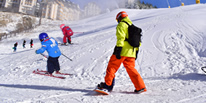The Most Interesting Monuments, Sites, Landmarks and Attractions of Granada
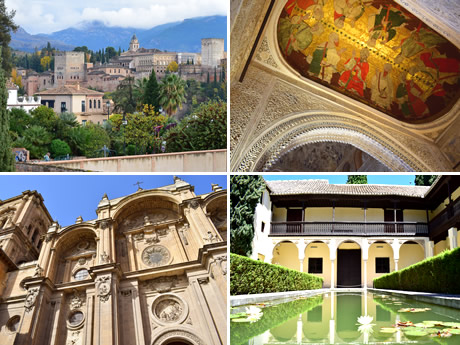

Enjoy a special day at the Alhambra with a guided tour
 Alhambra and Nasrid Palaces: discover the wonders of the Alhambra with this all-inclusive tour: the Nasrid Palaces, the Generalife, the Alcazaba, and more.
Alhambra and Nasrid Palaces: discover the wonders of the Alhambra with this all-inclusive tour: the Nasrid Palaces, the Generalife, the Alcazaba, and more.
 Alhambra + Albaicín + Sacromonte: a perfect combination of a guided tour of the Alhambra in the morning and a guided tour of the Albaicin and Sacromonte in the afternoon.
Alhambra + Albaicín + Sacromonte: a perfect combination of a guided tour of the Alhambra in the morning and a guided tour of the Albaicin and Sacromonte in the afternoon.Many of Granada's landmarks preserve the legacy of those times, reflecting a history that is both tragic and captivating.
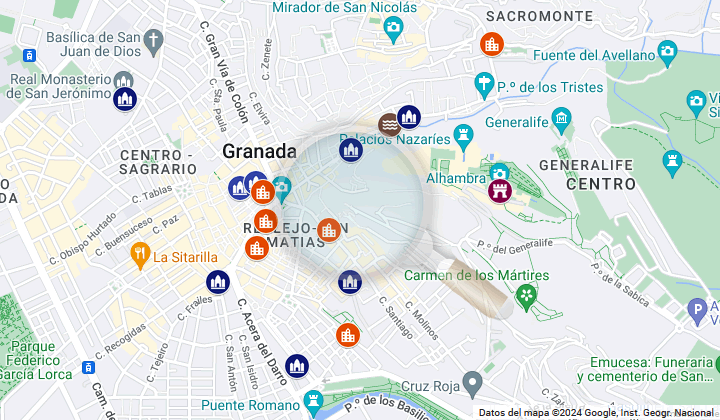
Here we have compiled a selection of the most representative monuments of Moorish and Christian Granada, including practical information such as visiting hours, prices and how to get there:
At the bottom of the page, you’ll find information about some of Granada’s lesser-known monuments that are also well worth a visit.
The Alhambra
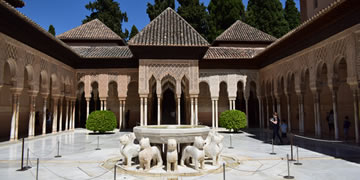 Granada's most visited monument, stands as the jewel in the crown, being the best-preserved and oldest Moorish palace.
Granada's most visited monument, stands as the jewel in the crown, being the best-preserved and oldest Moorish palace.Cartuja Monastery
 The Monastery is renowned for its sacristy, a masterpiece of Spanish Baroque, featuring great paintings and sculptures by local artists.
The Monastery is renowned for its sacristy, a masterpiece of Spanish Baroque, featuring great paintings and sculptures by local artists.
Granada Cathedral
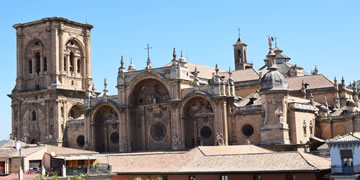 The Cathedral of Granada, as Spain's first Renaissance church, holds a significant landmark among the city's monuments.
The Cathedral of Granada, as Spain's first Renaissance church, holds a significant landmark among the city's monuments.
Royal Chapel
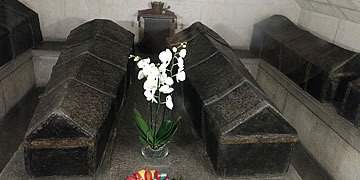 The Royal Chapel, where the the Catholic Monarchs are buried, stands as one of Granada's most captivating monuments.
The Royal Chapel, where the the Catholic Monarchs are buried, stands as one of Granada's most captivating monuments.
Banuelo - Arab Baths
 Banuelo, constructed in the eleventh century, is a National Monument and one of Spain's oldest and best-preserved Arab public baths.
Banuelo, constructed in the eleventh century, is a National Monument and one of Spain's oldest and best-preserved Arab public baths.
Corral del Carbon
 Constructed by Yusuf I, it served as the hub for merchants and storage of goods, making it the oldest site of Arab Granada.
Constructed by Yusuf I, it served as the hub for merchants and storage of goods, making it the oldest site of Arab Granada.
The Madraza
 The Madraza is a Nasrid construction commissioned by Yusuf I in 1349 and serves as Granada's inaugural Arab university.
The Madraza is a Nasrid construction commissioned by Yusuf I in 1349 and serves as Granada's inaugural Arab university.
Cuarto Real Santo Domingo
 The Royal Quarters were utilized by Muslim kings for dressing during the days of Ramadan and was designated for the Arab queens.
The Royal Quarters were utilized by Muslim kings for dressing during the days of Ramadan and was designated for the Arab queens.
Abadia del Sacromonte
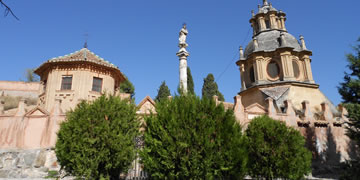 Perched on Sacromonte Hill, it has a fantastic courtyard, church, caves, and stunning views of the Alhambra, city, and mountains.
Perched on Sacromonte Hill, it has a fantastic courtyard, church, caves, and stunning views of the Alhambra, city, and mountains.
San Jeronimo Monastery
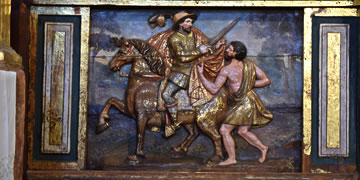 A beautiful monastery with stunning interiors, elaborate decoration, a spacious courtyard, and a unique sanctuary in the chapel.
A beautiful monastery with stunning interiors, elaborate decoration, a spacious courtyard, and a unique sanctuary in the chapel.
In addition to the mentioned monuments, Granada has other interesting attractions, churches, and historical
sites to explore, such as the Basílica de las Angustias, the church of Santo Domingo or the Casa de los Tiros.
Santa Ana Church
 A charming church with a unique Mudejar-Renaissance design, adorned with paintings,
stands amidst interesting buildings nearby.
A charming church with a unique Mudejar-Renaissance design, adorned with paintings,
stands amidst interesting buildings nearby.
Santo Domingo Church
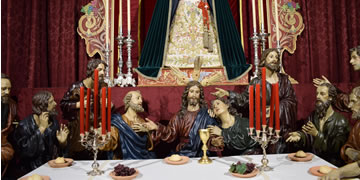 Santo Domingo Church features multiple architectural styles: Gothic, Late Baroque,
and Renaissance, with some Roman decorations.
Santo Domingo Church features multiple architectural styles: Gothic, Late Baroque,
and Renaissance, with some Roman decorations.
Basilica Angustias
 Built in 1617, Basilica of Angustias features a nave, chancel, and eight sides, adorned with paintings by local Granada artists.
Built in 1617, Basilica of Angustias features a nave, chancel, and eight sides, adorned with paintings by local Granada artists.
Casa del Chapiz
 A charming traditional house along the road to the Albaicin boasts a small garden and the Alhambra views, perfect for leisurely visits.
A charming traditional house along the road to the Albaicin boasts a small garden and the Alhambra views, perfect for leisurely visits.
Royal Hospital
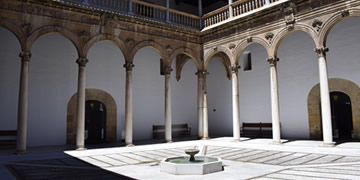 Commissioned by Catholic Monarchs to serve the sick, poor and pilgrims, this hospital harmoniously blends five artistic styles.
Commissioned by Catholic Monarchs to serve the sick, poor and pilgrims, this hospital harmoniously blends five artistic styles.
House of Zafra
 A prime example of 14th-century Nasrid architecture, now functions as a center
for the exploration and interpretation of local history.
A prime example of 14th-century Nasrid architecture, now functions as a center
for the exploration and interpretation of local history.
Gate of Elvira
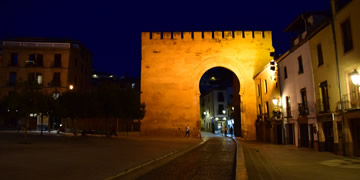 A prominent atrraction from the 11th century, once part of Granada's original
city walls and serving as a primary gateway into the city.
A prominent atrraction from the 11th century, once part of Granada's original
city walls and serving as a primary gateway into the city.
Casa de los Tiros
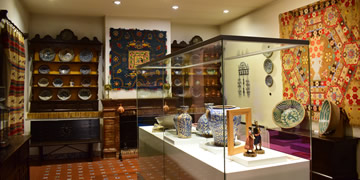 One of Granada's lesser-known yet captivating house museums from the 16th century, featuring a remarkable collection.
One of Granada's lesser-known yet captivating house museums from the 16th century, featuring a remarkable collection.
In Granada, you'll encounter numerous other interesting but less famous monuments, hidden historic sites and impressive churches:
Zafra Convent in Carrera del Darro
 A grand Renaissance façade, featuring a white stone doorway adorned with a sculpture of Santa Catalina de Siena
and the shields of Don Hernando de Zafra's family, who served as the Catholic Monarchs's secretary, marks the entrance to the
Zafra convent in Granada
A grand Renaissance façade, featuring a white stone doorway adorned with a sculpture of Santa Catalina de Siena
and the shields of Don Hernando de Zafra's family, who served as the Catholic Monarchs's secretary, marks the entrance to the
Zafra convent in Granada
Established in 1670, the construction of the Hermana convent was not finalized until 1540, thanks to the generous support of Zafra's widow.
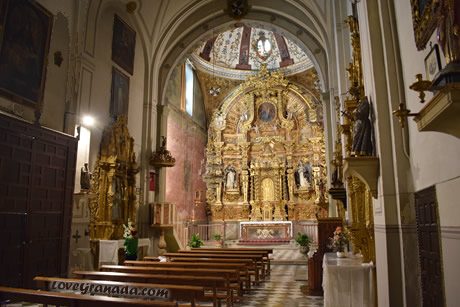 The convent features several courtyards originating from Moorish houses donated for its construction.
The convent features several courtyards originating from Moorish houses donated for its construction.
After a devastating fire in 1678, the convent's exquisite Mudejar-style church underwent renovation, with the addition of the baroque decorations seen today.
Only the walls, a portion of the first main altarpiece, and the mural paintings of the choir remain from the original church.
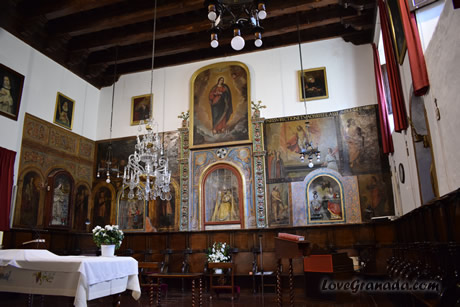 The main chapel's dome, adorned with intricate baroque plasterwork, stands out for its exquisite beauty.
The main chapel's dome, adorned with intricate baroque plasterwork, stands out for its exquisite beauty.
The convent serves as an intriguing museum, housing significant pieces from Granada's baroque school, yet it remains relatively undiscovered.
The congregation of Dominican nuns in Granada is renowned for crafting highly sought-after convent sweets.
Convent of San Anton
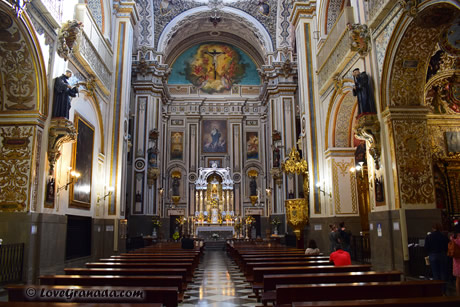 At the corner of San Antón and Recogidas streets, we find the church of this convent,
which was founded by friars of the Third Order in 1534.
At the corner of San Antón and Recogidas streets, we find the church of this convent,
which was founded by friars of the Third Order in 1534.
The church began construction at the beginning of the 17th century. Two doors, crafted by Luis Arévalo before 1756, provide access to its interior.
It has a single nave covered with a barrel vault featuring lunettes, a transept with a hemispherical dome, a rectangular main chapel, and ten side chapels, two of which are used as access to the temple.
 The Convent has a large porticoed courtyard formed by semicircular arches on gray marble columns,
with its spandrels decorated with masks.
The Convent has a large porticoed courtyard formed by semicircular arches on gray marble columns,
with its spandrels decorated with masks.
Above two floors that open onto the courtyard are balconies and windows. It preserves important works of the Granada school, and the Granada Baroque painter Ambrosio Martinez de Bustos was buried here in 1674.
Convent of Carmen (now City Hall)
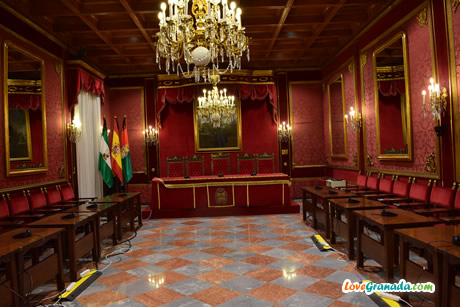 It was a convent of Carmelitas Calzados founded in 1552, with construction finishing in 1627.
It was a convent of Carmelitas Calzados founded in 1552, with construction finishing in 1627.
The church and convent were built over the old hermitage of Nuestra Señora de la Cabeza, located on the banks of the Darro.
After the disentailment of the 19th century, a large part of the church and one of the courtyards disappeared.
The remaining courtyard dates back to 1622. It features arcades on four sides formed by semicircular arches supported by Tuscan columns made of Sierra Elvira stone. Since 1851, it has been part of the Granada City Hall.
In addition to the above mentioned landmarks, Granada offers a wealth of other
beautiful spots and captivating attractions and
scenic viewpoints to vibrant markets, and
museums, making it a city full of discovery at every turn.
Page Updated: May 16, 2025
Was this useful? Been to these sights? Share your thoughts!
© Copyright •
LoveGranada.com • Any use of the content, including copying of it in whole or in part is prohibited.
You Might Also Be Interested In
Opinions about Monuments of Granada
The Alhambra is not Spain's oldest palace
The Alhambra is not the oldest preserved palace from the Muslim period in Spain; it is the best preserved, but not the oldest. In cities like Seville or Murcia, there are older palaces. The Alhambra began construction in the 14th century, making it the latest Muslim building in Spain. It is not a single palace, but rather a complex of several palaces belonging to various emirs.
Basilica of San Juan de Dios
The Basilica of San Juan de Dios should also be included. It stands as a Baroque testament to the devotion that all of Granada held for the saint and their hero Juan de Dios, for his valuable contributions to the city's streets in the sixteenth century.
Old 16th century convent on Carrera del Darro
Zafra Convent is a mix of Baroque, Renaissance and Munejar architecture built in the 16th century by the widow of Hernando de Zafra, the secretary of the Isabel and Fernando (Catholic monarchs).
Located near Arab baths on Carrera del Darro, one of the most beautiful streets of Granada.
See More Reviews
Great cookies made by nuns in Zarfa Convent
You can have very interesting experience buying cookies from the nuns. They make amazing cookies. There is a doorbell button, press the bell and wait for few minutes. You cannot see the nuns, they will be behind a lazy susan in the wall. Just pay and a box of almond cookies will appear.
The nuns only speak Spanish, so just say “comprar dulces” or just “dulces”. A pack cost 6 euros, try to have exact amount of money. They might have several types of cookies.
Buying via the lazy susan in the wall, Zafra Convent
We used the lazy susan to try and buy a keyring from the nuns, there is a price list and contents card displayed.
However our Spanish is so poor we ended up with a small bottle of herbal alcohol.
The nun and I, either side of the wall, were both giggling at our conversational difficulties and it was a fun, surreal experience.
